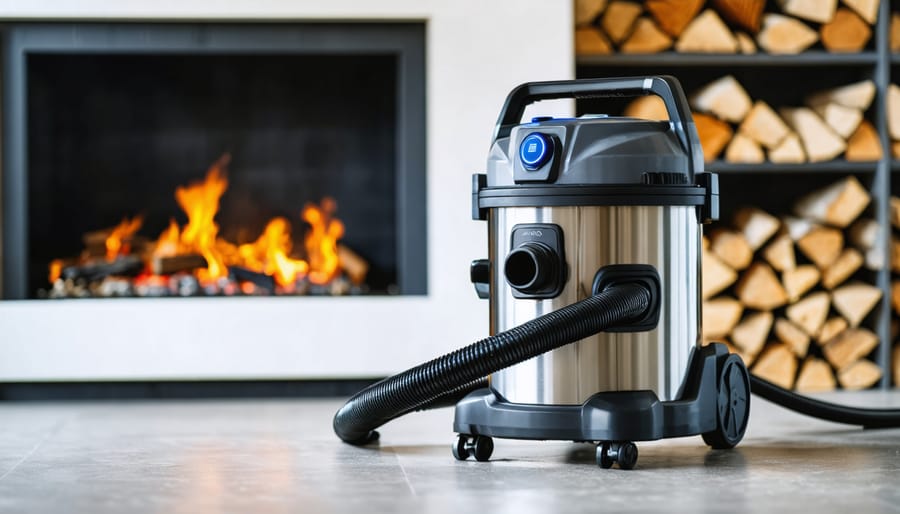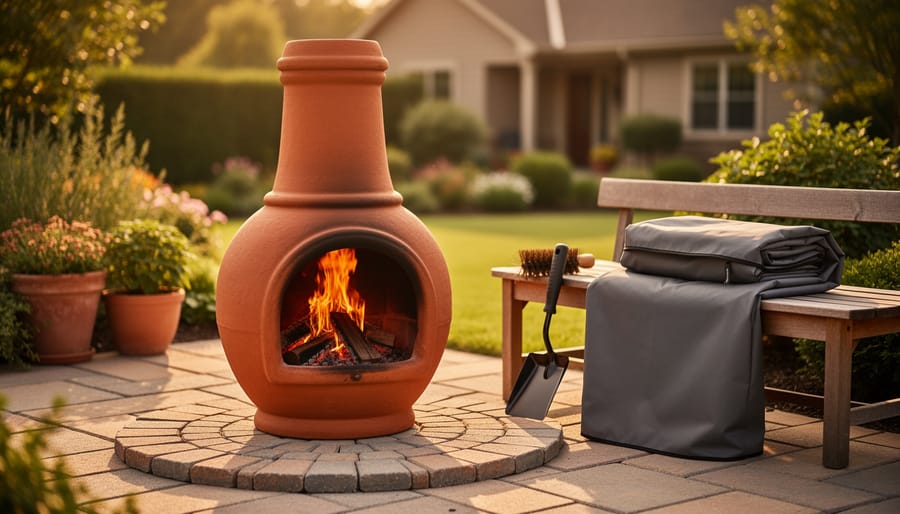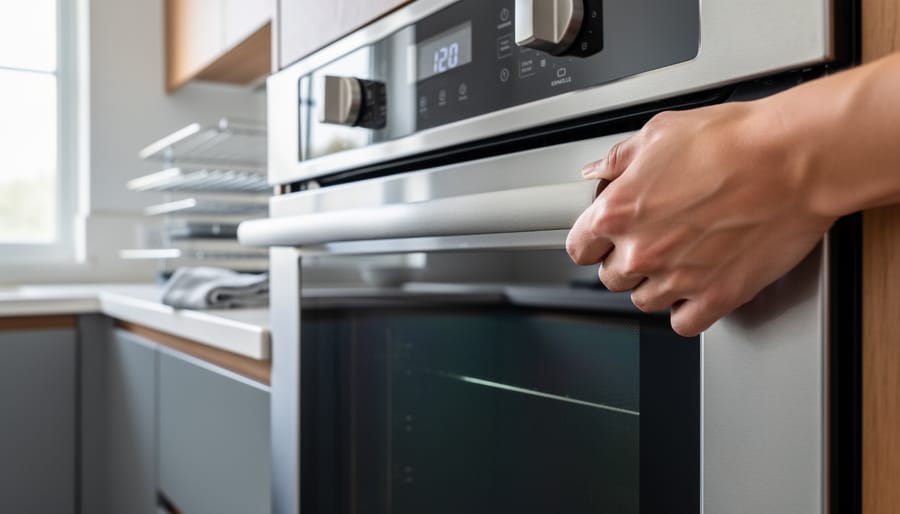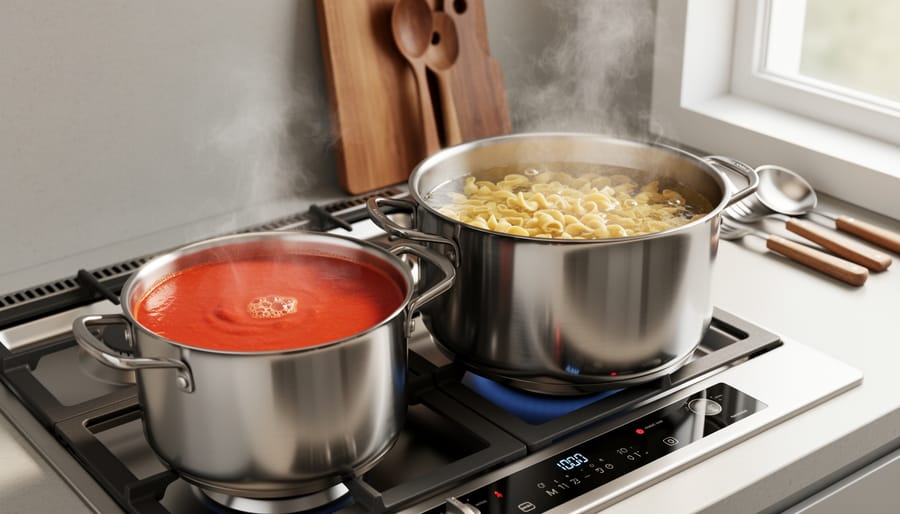Transform your fireplace maintenance routine with a specialized warm ash vacuum cleaner, engineered specifically to handle hot embers and fine ash particles that regular vacuums can’t safely manage. Unlike standard household vacuums that risk fire damage and potentially dangerous ash dispersion, these purpose-built devices feature fire-resistant components, advanced filtration systems, and metal construction that withstands temperatures up to 140°F. For homeowners seeking a cleaner, safer way to maintain their hearth, warm ash vacuums eliminate the 24-hour waiting period traditionally required for ash to cool, allowing for immediate cleanup after your evening fire. This innovative solution not only protects your home from lingering ash dust but also extends the life of your fireplace while maintaining optimal burning efficiency throughout the season.
Understanding Warm Ash Vacuum Technology
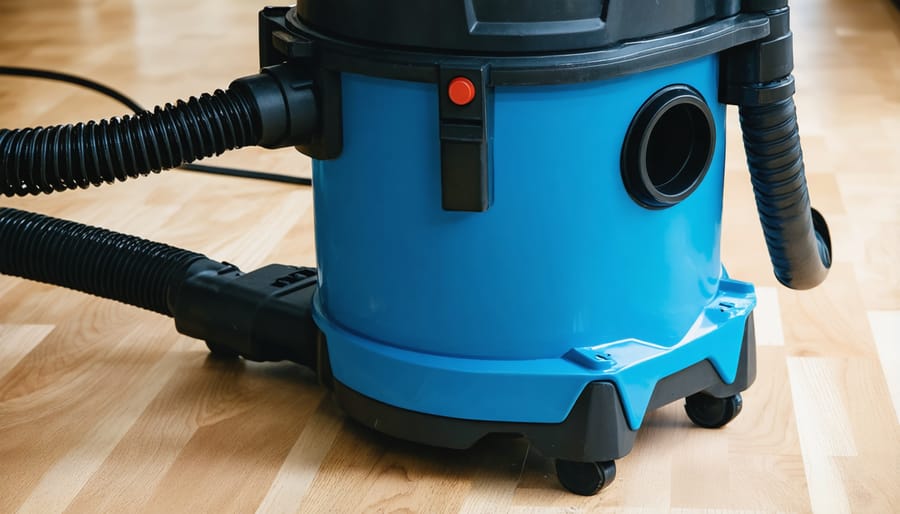
Heat-Resistant Components
The key to a warm ash vacuum’s safety lies in its specialized heat-resistant components. These vacuums feature a metal canister construction, typically made from heavy-duty steel or aluminum, designed to withstand temperatures up to 140°F (60°C). The internal filtration system incorporates fire-resistant materials, including a specially treated HEPA filter that can handle warm particles without degrading or becoming a fire hazard.
Critical components like the hose and attachments are crafted from flame-retardant materials, often featuring double-wall construction for added insulation. The vacuum’s motor housing is strategically separated from the collection chamber by heat shields and thermal barriers, preventing any heat transfer that could damage the electrical components.
Another essential feature is the airtight sealing system, which uses high-temperature gaskets and seals to contain warm ash safely. Many models also include a thermal cut-off switch that automatically shuts down the vacuum if internal temperatures rise too high, providing an extra layer of protection for both the user and the equipment.
These thoughtful design elements work together to ensure safe operation while maintaining optimal suction power and filtration efficiency.
Fire-Safe Filtration Systems
Fire-safe filtration is the heart of any warm ash vacuum, featuring multiple layers of specialized filters designed to trap hot embers and prevent fire hazards. The primary defense is a metal pre-filter that catches larger particles and allows them to cool safely. Behind this, you’ll find a fine-mesh screen that captures smaller embers before they can reach the motor compartment.
Most quality warm ash vacuums incorporate heat-resistant HEPA filters that can withstand temperatures up to 800°F while trapping microscopic ash particles. These advanced filtration systems often include self-extinguishing materials and flame-retardant components throughout the vacuum’s internal structure.
A crucial safety feature is the thermal protection system, which automatically shuts down the vacuum if internal temperatures reach dangerous levels. Some models also include spark arrestors and cool-down chambers that ensure hot embers are fully extinguished before reaching the collection container.
Regular maintenance of these filtration systems is essential for optimal performance and safety. Most manufacturers recommend cleaning or replacing filters after every few uses to maintain proper airflow and prevent potential fire risks.
Safe Operating Temperatures
When using a warm ash vacuum, it’s crucial to strike the right balance between efficiency and safety. While these specialized vacuums are designed to handle warmer ash than regular vacuums, there are still important temperature guidelines to follow. The ideal temperature range for using a warm ash vacuum is between 40°C (104°F) and 50°C (122°F). At these temperatures, the ash is cool enough to handle safely but still warm enough to save you waiting time.
To check ash temperature, use an infrared thermometer before vacuuming. If you don’t have a thermometer, there are several practical ways to assess ash temperature. Wait at least 12 hours after your last fire, and test the ash by carefully hovering your hand about 6 inches above it. If you feel significant heat, wait longer before vacuuming.
Never attempt to vacuum ash that’s above 50°C (122°F), as this can damage your vacuum and potentially create a fire hazard. The ash should be completely free of any glowing embers or hot spots. Remember that while the surface might feel cool, deeper layers can retain heat longer, so always work gradually and pay attention to any unusual heat buildup in your vacuum.
For optimal safety and performance, consider vacuuming in small sections, allowing you to monitor temperature changes and ensure consistent cleaning without overheating your equipment.
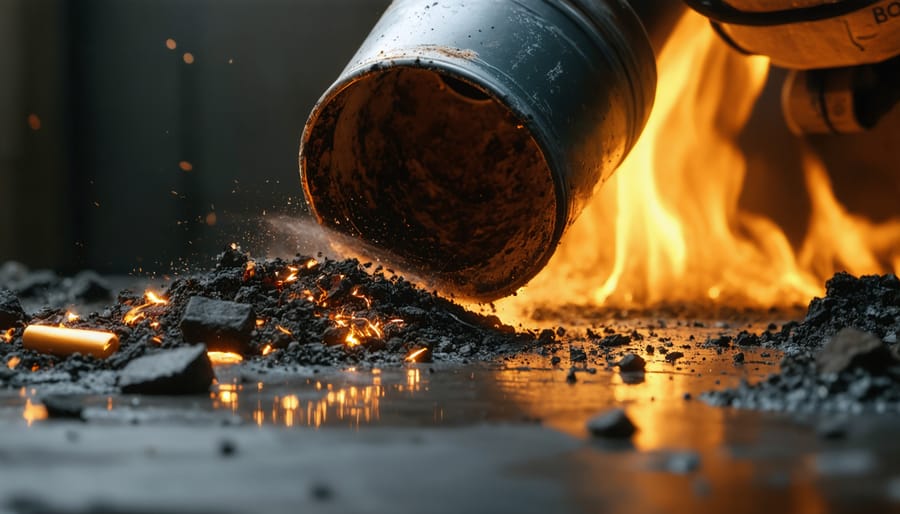
Maximizing Cleaning Efficiency
Optimal Cleaning Patterns
To achieve the best results with your warm ash vacuum, follow a systematic cleaning pattern. Start by removing larger debris and any remaining logs from your fireplace grate. Begin vacuuming from the outer edges of the firebox, working your way inward in overlapping strokes. Pay special attention to corners and crevices where ash tends to accumulate.
For optimal cleaning, maintain a steady pace and hold the nozzle about half an inch above the ash surface to prevent clogging. Work in small sections, using gentle back-and-forth movements. If you encounter warm spots, briefly hover over them rather than lingering, allowing the vacuum to safely collect the ash without overheating.
Remember to clean around the damper area and along the fireplace walls. Finally, make a last pass over the entire surface to catch any remaining particles. This methodical approach ensures thorough cleaning while maximizing your vacuum’s efficiency and longevity.
Time-Saving Techniques
To maximize your cleaning efficiency with a warm ash vacuum, start by establishing a systematic cleaning pattern, moving from one side of the fireplace to the other to avoid missing spots. Pre-sweep larger ash deposits toward the center before vacuuming to reduce the number of passes needed. Keep the vacuum nozzle about half an inch above the surface while cleaning to prevent clogging and maintain optimal suction.
For best results, tackle the job when ash is completely dry but still warm – this makes the cleaning process much faster as the ash is lighter and easier to collect. Always have your attachments within arm’s reach and consider using the crevice tool for corners and edges first, followed by the main nozzle for broader areas.
Remember to empty the canister when it’s half-full rather than waiting until it’s completely full. This maintains maximum suction power and reduces the risk of overheating. Setting up a clean drop cloth around your work area will also save time on post-cleaning cleanup.
Maintenance and Care
Regular maintenance of your warm ash vacuum is essential for both optimal performance and longevity. After each use, empty the collection container outdoors to prevent ash from dispersing inside your home. Tap the container gently to ensure all ash is removed, and consider wearing a dust mask during this process.
Clean or replace the filters according to the manufacturer’s recommendations, typically every 3-5 uses depending on frequency and volume. Clogged filters can reduce suction power and potentially compromise the vacuum’s safety features. Gently tap the filter to remove loose debris, then use compressed air to blow out remaining particles in a well-ventilated area.
Inspect the hose regularly for wear, tears, or heat damage. Clean it by disconnecting both ends and running a flexible brush through its length. Check the metal components for any signs of corrosion, especially if you’ve accidentally vacuumed damp ash. Keep all connections tight and secure.
Store your warm ash vacuum in a dry, cool place away from moisture and extreme temperatures. Before storing, ensure all components are completely clean and dry. Periodically check the power cord for any damage or wear, and maintain the wheels or casters by removing any debris that might affect mobility.
For optimal care, consult your specific model’s manual, as maintenance requirements may vary between manufacturers. Following these care guidelines will help ensure your warm ash vacuum remains a reliable cleaning companion for years to come.
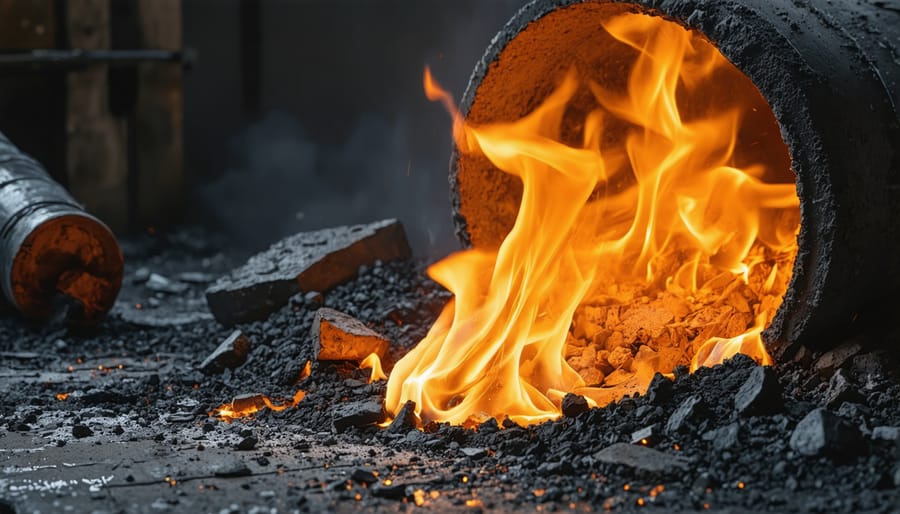
A warm ash vacuum is an invaluable tool for maintaining a clean and safe fireplace environment. By investing in this specialized equipment, you can significantly reduce cleanup time while protecting yourself and your home from potential hazards. Remember to always follow the manufacturer’s guidelines for temperature limits and maintenance procedures. Regular cleaning with a warm ash vacuum not only keeps your fireplace looking pristine but also helps prevent ash buildup that could affect its efficiency. Whether you’re a frequent fireplace user or occasional wood-burning enthusiast, this purpose-built appliance offers the perfect balance of convenience and safety. Make your fireplace maintenance routine easier and safer by incorporating a warm ash vacuum into your cleaning arsenal – it’s a smart choice for any home with a wood-burning feature.

